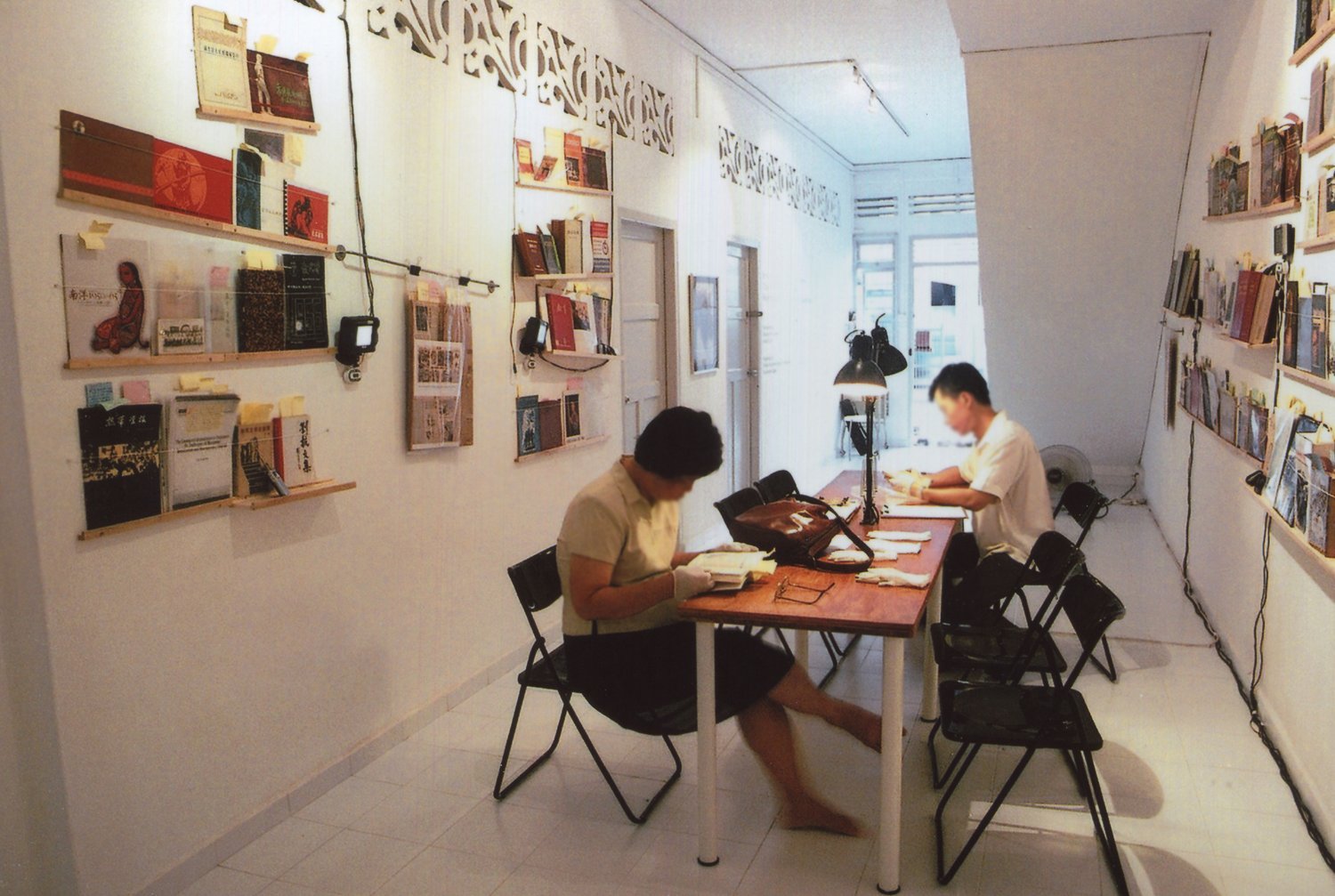One-Man Art Archive: The Story So Far
The Singapore Art Archive Project since 1999
By Koh Nguang How
Installation view of SAAP, NTU Centre for Contemporary Art Singapore, March 2015.
My one-man archive was named ‘The Singapore Art Archive Project (SAAP)’ in 2005 when I participated in a residency at the new curatorial collective and art space p-10 in Little India. It started from my three-room HDB flat in 1999, which was both my new single-home and a resource space for my growing materials related to art and culture in Singapore.
Before I became an artist and independent art researcher in 1992, I learned about the art world as a curatorial assistant at the National Museum of Singapore. At the time, I enrolled in a distance learning program named ‘An Introduction to Museum Studies’ under the Commonwealth Association of Museums. I also attended two three-month training courses in Thailand organised by SEAMEO Regional Centre for Archaeology and Fine Arts: ‘Preventive Conservation of Museum Objects’ in 1989 and ‘Documentation of Non-Print Materials on Culture’ in 1990. Several exhibitions at the museum and private galleries, including events during the Singapore Festival of Arts, allowed me to photograph and collect related ephemeras, adding to my collection of newspaper cuttings I started in the early 1980s. The contents of the SAAP were created between the early 20th century to this day, and they centre on topics ranging from art education in Singapore to international art exchanges, and from traditional art mediums to performance art and digital media. Then, I did not have the money to buy the relevant publications for my archive. Instead, I collected materials at art events and exhibitions, and accepted those given away by artists and book collectors. Some were discards from homes, schools and closing bookstores.
During my residency with p-10, I was invited by Hong Kong’s Asia Art Archive (AAA) to write about the story of my archiving activities for their online project. I titled it ‘From Photographing to Archiving Contemporary Art in Singapore: The Singapore Art Archive Project@p-10’. Subsequently in 2010, I was also invited by AAA to participate in the international workshop ‘Archiving the Contemporary: Documenting Asian Art Today, Yesterday and Tomorrow’ in Hong Kong. I then started using Facebook to host my digitised archives, especially images that I photographed. Although the name of SAAP was inspired by AAA, it cannot be compared with the established institution. As such, I intentionally included the word “project” in the name to signify that it was a work in progress, or an ongoing artwork.
My archiving approach is almost compulsive. In the late 1980s, I would record the sounds from performance art and other outdoor events. Rather than documenting two-dimensional works as they were, I would capture them in their individual contexts. My approach differs from most official records, which focuses primarily on the guests-of-honour and politicians. Instead, I include materials on the preparation process, audiences involved and the tearing down of exhibitions. When I learned how to use a personal computer and image scanner in 1999, I began taking video recordings and started scanning paper-based materials. As such, I started collecting in both physical and digital formats. At the same time, the priorities of my documentation practice soon shifted to the fast-disappearing works and archives of older artists.
Installation views of ‘ERRATA: Page 71, Plate 47. Image caption. Change Year: 1950 to Year: 1959; Reported September 2004 by Koh Nguang How’, 2004, p-10. Image courtesy of Koh Nguang How.
I have presented about 15 artworks and exhibitions under the SAAP in Singapore and abroad. The first was a group exhibition ‘Performance Week’ at the new Gallery 21 in 1992, which showcased a selection of performance art archives that I documented from 1987. Next was the show ‘ERRATA: Page 71, Plate 47. Image caption. Change Year: 1950 to Year: 1959; Reported September 2004 by Koh Nguang How’ at p-10 in 2004, which focused on how a dating error in a significant publication would alter the course of Singapore art history. With the naming of my archive in 2005, I continued to showcase different materials such as newspapers in the Singapore Biennale in 2011, entitled ‘Artists in the News’; photographic images in ‘Art Places’ at the Jendela Visual Arts Space in 2015; and printed ephemeras with audio and video materials in many subsequent exhibitions. For some of these initial exhibitions, I calculated the risks of damaging the more fragile documents and allowed visitors to handle a few rare archival materials. There were also usually no temperature or humidity controls where my archives were stored, unless when they were exhibited in museum and gallery spaces.
The most recent project based on my archive is a virtual reality (VR) work under the National Arts Council’s Digital Presentation Grant for the Arts (DPG). For this, I was approached by digital media designer John Ng, who had previously created a few short videos of me introducing my collections as part of 'ERRATA'. The VR work ‘The Singapore Art Archive Project (SAAP) – VR Series 1 (Collections)’ launched in April 2021.
This act of curating and presenting the archives in different ways and themes will continue as long as it is financially possible and perhaps the project could transform into a physical space or institution in the future.
This article was originally published in Check-In 2021. If you would like to support us in our making of Check-In 2022, you can make a contribution here.
















